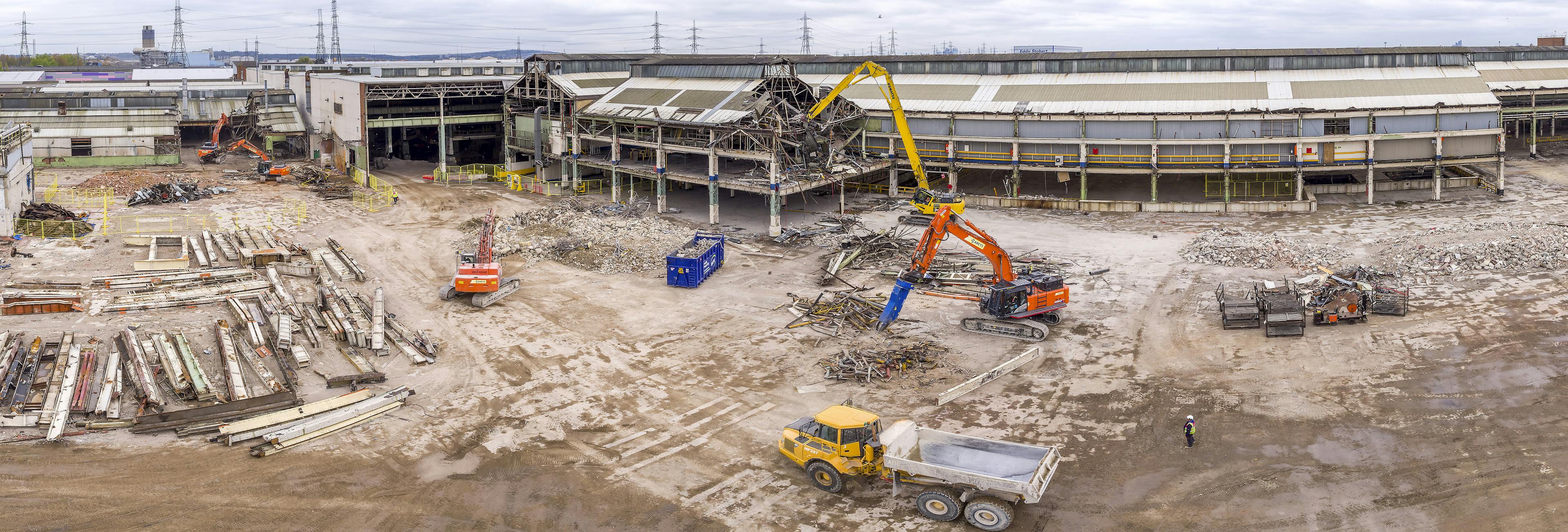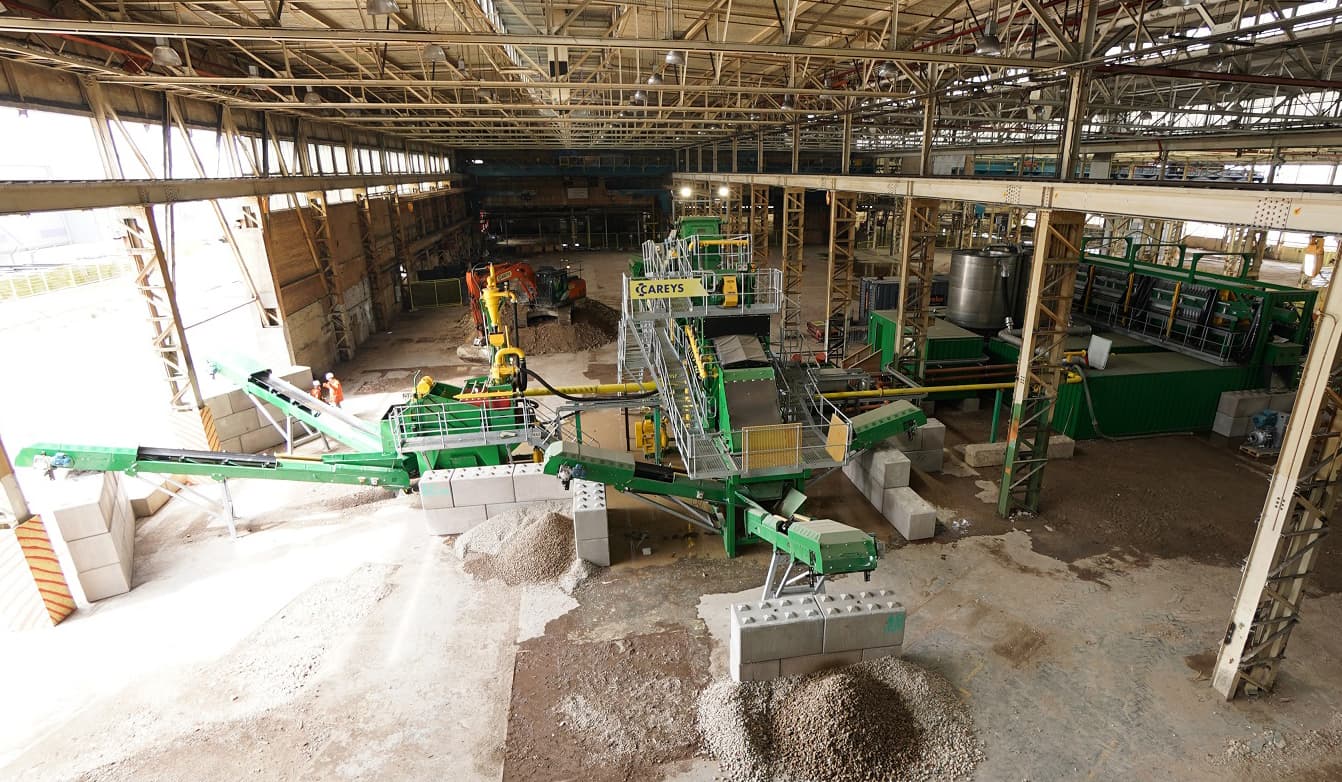
Ford Dagenham
Careys were appointed principal contractor for the project to demolish and remediate the former Ford Dagenham Stamping and Tooling Operations Plant. The vast project has a demolition boundary of 20 hectares, and saw the complimentary services offered by Careys – asbestos removal, demolition, remediation, waste management and in-house design - combine to successfully deliver works.
Client
Dagenham Dock (St Congar)Location
EssexPrincipal Contractor
CareysOur aggregate engineering plant, which is regulated under an environmental permit, is capable of processing 500 - 750 tons of materials per day, depending on material type — greatly enhancing our capabilities and expediting our pace in remediating contaminated sites. The use of this soil engineering plant reflects our commitment to our self-delivery. As part of its bespoke design, the plant is totally ‘plug & play’, able to be rapidly demobilised and remobilised to new sites within approximately three weeks.
The vast Ford Dagenham site had a demolition boundary of approximately 20 hectares (the equivalent of 28 football pitches), which contained a large number of buildings (across 70% of the site), with unusually large and deep basements (in excess of 1 hectare, and 7m deep), in addition to other buried obstructions.
Before the commencement of demolition works, we conducted investigations of the ground conditions, in order to confirm the extent of soil contamination and its effects on the ground water. We installed over 100 monitoring wells and numerous trial pits to refine the contamination detected during the original site investigation. Once we had identified the nature and scope of the contaminants on-site, we began demolition of the entire facility, including floor slabs, foundations and basements. This included installing 1km of sheet piles to stop groundwater ingress into the deep basements during demolition. After demolition was completed, we carried out further site investigation to monitor the contamination areas.
Throughout the course of our works, we used ground-penetrating radar surveys, on areas of slab removal, to further locate and assess any buried obstructions and pipe works. Based on our findings, we subsequently performed many excavations to verify and remediate contamination.

On-site testing allows same-day, real-time monitoring of soils at all stages of reuse and processing

On-site testing allows same-day, real-time monitoring of soils at all stages of reuse and processing
We also deployed an in-house, state-of-the-art chemical testing laboratory, which enabled us to characterise excavated materials for reuse. Basing the laboratory facility on-site allowed us to conduct same-day, real-time monitoring of soils at all stages of reuse and processing. The laboratory was operated independently by our partnering consultant, AAe, with further verification testing by external laboratory partner, Chemtest.
Our remediation and soil engineering plant essentially has four main phases of operation:
- Oil skimming and carbon filter water treatment for hydrocarbon-impacted waters and in-situ soils
- Soil washing to remove contamination
- Screening to separate excavated spoil into size fractions
- Soil pressing to solidify the liquefied ‘clay/silt’ fraction generated during soil washing
Soils which had been highlighted for remediation were placed within the soils management area (SMA). These were then processed through the plant and tested, prior to reuse, to ensure contract compliance.
The water used in the plant was treated groundwater from on-site remediation works. We continually monitored it, feeding it back through the water treatment facility to be reused in the plant.
By performing remediation on-site, we were able to effectively remove dozens of trucks from the roads every day – significantly reducing transport and processing costs for our clients, improving project efficiency and protecting the environment.
additional site remediation works
additional site remediation works
In addition to soil washing, we employed various other methods of remediation – including bio-piling and soil injection – to further reduce the amount of waste generated on-site.
For instance, we installed ‘digging shields’ – 4m-diameter, 6m-long moveable pre-formed cofferdams – in order to extract hydrocarbons trapped within the upper gravel layers, some 6m below the existing ground level. These were designed to be moved in pairs within the hydrocarbon hotspots, creating a negative head of pressure, which facilitated the flow of trapped oil into the shields. This was then skimmed and processed within the soil engineering plant.
The Ford Dagenham project required that we import approximately 400,000m3 of materials to fill basements and provide a 1.5m land raise for flood protection – with the top 0.5m of this remediated land meeting the human health standard for residential buildings.
We were able to bring in (with the help of sister company, SENECA resource recovery) 90% of all the required fill for the Ford Dagenham project from other Careys sites in London, which we then remediated through the soil engineering plant. We were also able to reuse some of the resultant aggregates on our other London sites. By doing this, we were able to substantially reduce disposal to area landfills.
We'd love to hear from you, so please get in touch